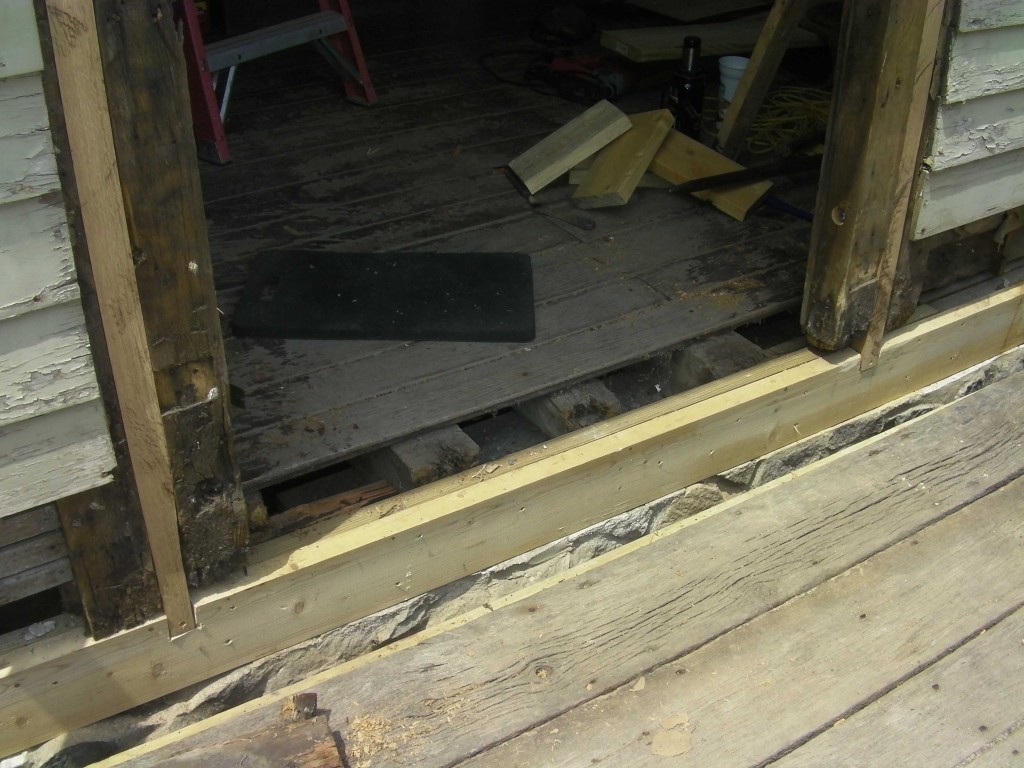Monthly Archives: June 2011
Cultivating the Corn at Firestone Farm

The Firestone Farm corn field is making some terrific progress, even though a flooded field in May forced us to replant. (The weather is something farmers struggle with, regardless of the year— whether it's 1885 or 2011!) In fact, it looks like most of our corn plants will still be "knee-high by the Fourth of July," despite all of our spring flooding - huzzah!
Last week, we cultivated our corn for the second time this year. Cultivating is when we loosen the soil and remove the weeds around each corn plant.
Because the Firestones did not use herbicides to kill weeds in their fields, they planted their corn three feet apart in each direction so that they had room to cultivate. And like the Firestones, we use a horse-drawn cultivator remove weeds in our cornfield.
We take our cultivator down each row from north to south, east to west, and then diagonally. This takes a great amount of patience and skill on the part of horse, driver and operator.
We used one of our newest horses, Henry, to cultivate. Although he is very young and new to this job, he handled the tight turns well and only stepped on a few corn plants. It looks like Henry and his partner Tom are turning out to be great additions to Greenfield Village!
Ryan Spencer is manager of Firestone Farm in Greenfield Village. Working at The Henry Ford was a childhood dream of his – although he did not realize then that it would involve so much manure.
farming equipment, horse drawn transport, Greenfield Village, farms and farming, farm animals, by Ryan Spencer, agriculture
Reflecting on the Emancipation Proclamation's Visit to Henry Ford Museum

Earlier this week, we had the wonderful opportunity to host a most historic document: the Emancipation Proclamation.
This document, which was issued and signed by President Abraham Lincoln, formally proclaimed freedom for all slaves and invited black men to join the Union Army and Navy, resulting in the enlistment of approximately 200,000 freed slaves and free black people before the Civil War's end. (For more details on the document, and why it can only be displayed for 36 hours at a time, check out the National Archives' Prologue blog post on the Emancipation Proclamation's visit to our museum.)
As word spread about the document's visit, the excitement and anticipation began to build across the Metro Detroit area - and when it was all said and done, an astonishing 21,015 people streamed past this historic document at Henry Ford Museum in 36 hours.
Just before the Emancipation Proclamation was made available for public viewing, our opening ceremony welcomed visitors and set the stage for this exciting event with remarks by our chairman of the board, Evan Weiner; our president, Patricia Mooradian; and U.S. Court of Appeals Judge Damon Keith, whose maternal and paternal grandparents were slaves.
Afterwards, groups like the Mosaic Youth Theatre of Detroit performed both solemn and rousing gospel songs for the rapidly-growing crowd.
The wait to see this historic document was long at times - up to eight hours - but most guests remained in high spirits, enjoying the performances on the stage near the exhibit, participating in hands-on activities like "enlisting" in the Army or taking breaks to check out artifacts throughout the museum, which was also completely open and free of charge during this timeframe.
And an honor guard - comprised of the Headquarters Guard, 5th U.S. Colored Troops, Company C and 102nd U.S. Colored Troops - stood at rapt attention near the document at all times.
Once again, we wish to send a huge thank you to everyone who turned out to see this important part of American history. We were truly honored to be able to host the Emancipation Proclamation, and humbled to see the response by our fellow Metro Detroiters. This was an experience we'll never forget, and we hope you won't, either!
Civil War, presidents, Abraham Lincoln, events, Henry Ford Museum, African American history
You've Got Mail! Restoring the Phoenixville Post Office in Greenfield Village

In the 1800s, the local post office was the epicenter for community events, functioning as both the town hall and gossip center.
Guests who have visited Greenfield Village recently may have noticed that our own historical "gossip center" - the Phoenixville Post Office, where you can purchase today's stamps and reproduction post cards - has been undergoing some necessary renovations, but luckily it's only for a short while! Let's take a closer look at what has been completed in the past month as we prepare for its re-opening in the next few weeks.
When the Phoenixville Post Office was moved to Greenfield Village from Connecticut in 1928, it was placed on a foundation that was smaller than the building. This size difference caused the entire building to shift, bow out and lean forward with time. This movement also caused the front door to lean and become crooked.
To fix the problem, our team of builders and engineers lifted the whole building (about an entire inch!) and straightened the door, as well as extended the porch in front of the post office to prevent rotting of the natural wood. A very daunting project for only a month of work!
Even though the Phoenixville Post Office will re-open to the public very soon, there still are a few things that need to be finished up for the renovation to be totally complete! Builders will replace the siding and roof as well as re-paint the exterior of the post office, although it will stay its original color.
Connecticut, Greenfield Village buildings, Greenfield Village, collections care, #Behind The Scenes @ The Henry Ford


















